Osteopath

Osteopathy/Chiropractic
Osteopaths
Osteopathy is considered an alternative medicine based on the principle that the way your body moves influences how it functions. Osteopathy studies the structure and functions of the body as a system closely integrated, pursuing a balance among the neurological, musculoskeletal, circulatory and visceral structures to improve a person’s well being.
Osteopathic practice aims to restore (and maintain) a person’s body to its overall natural state of well being. This natural balance is seen as promoting the body’s ability to heal and regulate itself. Osteopathic practitioners thus assess and treat the ‘whole person’, rather than just focussing on specific symptoms or illnesses.
Osteopaths through physical manipulation, massage and stretching aim to increase the mobility of joints, relieve muscle tension, enhance the blood supply to tissues and help the body to heal. The main diseases treated are lower back pain, neck pain, shoulder pain, arthritis, problems with the pelvis, hips and legs, sport injuries, problems with posture caused by driving, work or pregnancy but also conditions not strictly related to muscle, bones and joints such as headaches, migraines, digestive disorders.
Entry Requirements:
To become an osteopath you have to attend training courses that lead to a bachelor’s degree in osteopathy. Courses usually consist of four years of full-time training, five years part-time or a mixture of full or part-time. The main subjects of the course are about anatomy, physiology, pathology, pharmacology, nutrition and biomechanics, plus a period of clinical training.
A-Level Entry Requirements:
240-280 UCAS Tariff Points
The FMPA recommends:
Additional list of courses, memberships, experience, qualifications etc that would help interested parties gain employment/position in the Professional game within this discipline.
- Completion of the MPA Diploma: Preparing for work in professional football
The Chiropractic profession
Chiropractic, within the UK, is a statutorily-regulated profession and should not be regarded as a treatment, intervention or mono-therapy. Chiropractors provide a wide range of treatments/interventions including, but not limited to, manual therapy, exercise rehabilitation and self-care advice, and utilise psychologically-informed programmes of care. Chiropractic, like other healthcare professions, is informed by the evidence base and develops accordingly.
The care provided by chiropractors has been shown to be effective for a wide range of conditions including back, neck and shoulder pain, tennis elbow, plantar fasciitis, patellofemoral pain, cervicogenic headache, migraine and pain associated with hip and knee arthritis (Bronfort et al, 2010; Clar et al, 2014).
Chiropractors are involved in the medical teams for a wide range of sports, including football at all levels.
Chiropractic education
Chiropractic undergraduate education is currently offered by three UK universities and comprises a 4-5 year full-time or mixed-mode MChiro or BSc/MSc programme (A-level entry Requirements: 240-280 UCAS tariff points). Many chiropractors go on to focus their practice in a particular clinical area such as sport, where typical postgraduate qualifications include MSc in sport and exercise medicine and special certificates offered by FICS (the International Chiropractic Sports Federation). Most UK chiropractors who work in sport are registered with the Royal College of Chiropractors’ Sport and Exercise Faculty which recognises relevant postgraduate qualifications and experience and runs a national CPD programme.
References
Bronfort G et al (2010) Effectiveness of manual therapies: the UK evidence report.
Chiropractic & Manual Therapies 18:3.
https://www.chiromt.com/content/18/1/3
Clar C et al (2014) Clinical effectiveness of manual therapy for the management of musculoskeletal and non-musculoskeletal conditions: systematic review and update of UK evidence report. Chiropractic & Manual Therapies22:12.
